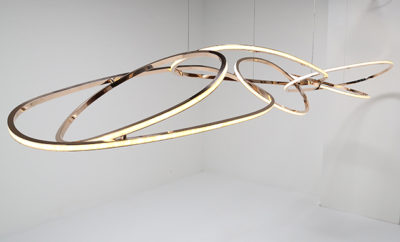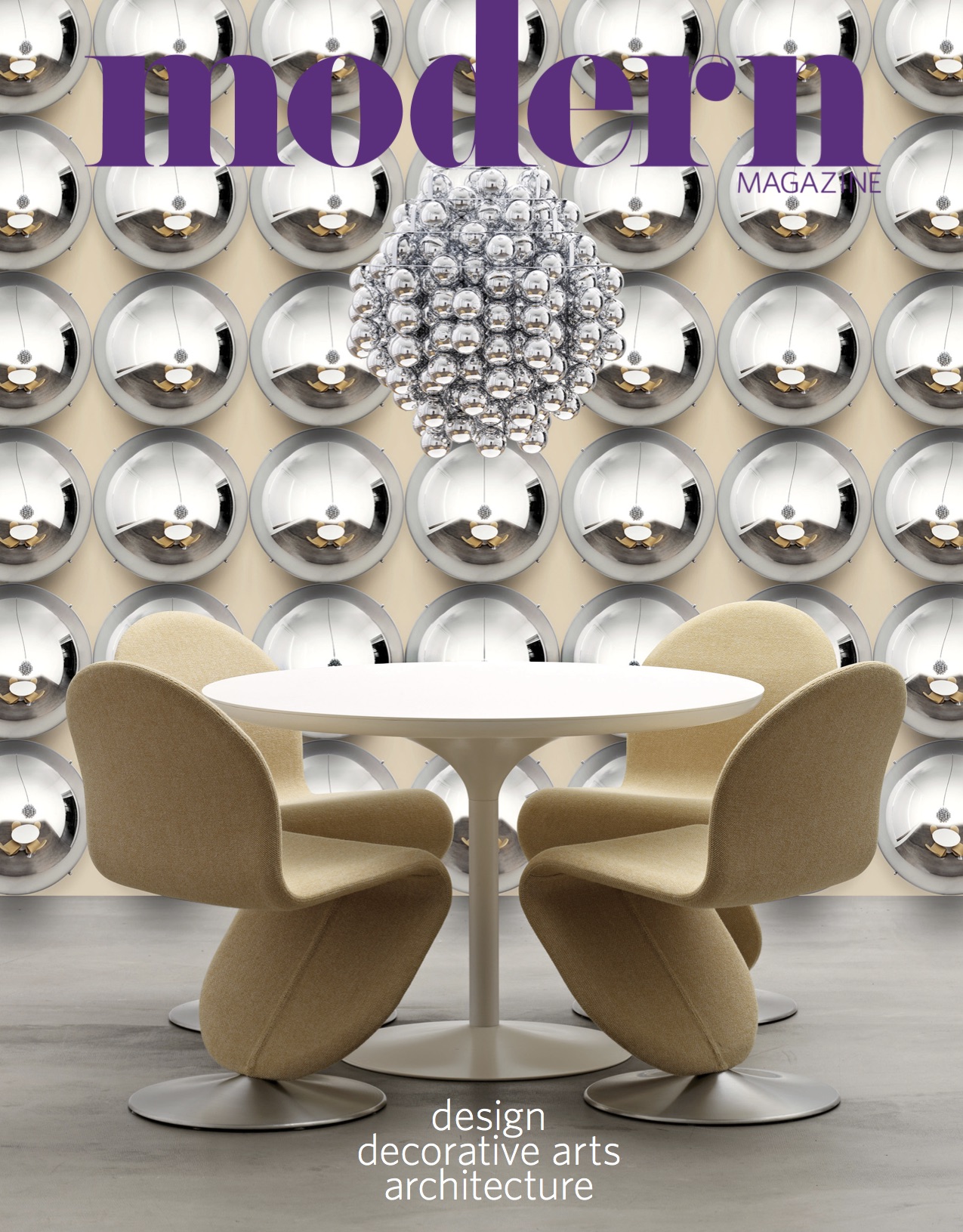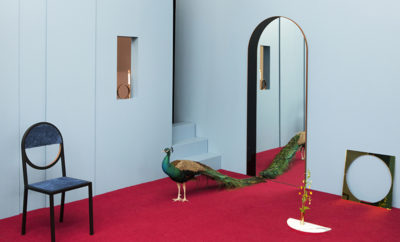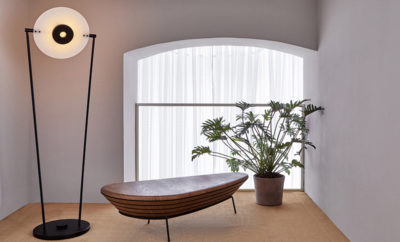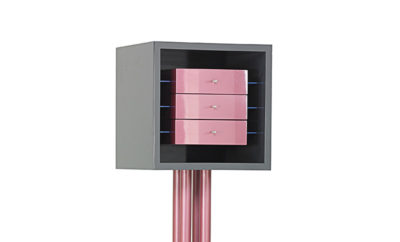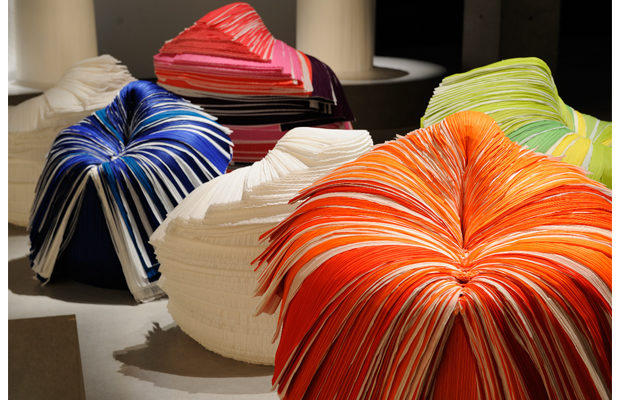
Design
Making Conversations

“Cabbage” chairs in the 2008 exhibition “XXIst Century Man” in Tokyo, 2008
The boundlessly inventive Japanese design group Nendo, led by Oki Sato, specializes in products and places that are intellectual, emotional, relevant—and fun
IN 2008, nendo—the nom-de-design of the Japanese architect Oki Sato and his studio—created the “Cabbage” chair. Made from a roll of pleated paper normally discarded in couturier Issey Miyake’s textile-making process, it was created by peeling away layers of the paper roll until a seating piece was formed. With this gesture, nendo—the word means “clay” in Japanese—gave the roll of material new life, and demonstrated not only an allegiance to the unique handmade object and a commitment to re-use of materials, but also made a strong statement for the preservation of the poetic in the everyday. The “Cabbage” chair was first shown in the exhibition “XXIst Century Man,” curated and staged by Miyake at the 21_21 Design Sight in Roppongi, Tokyo. Miyake’s idea was to show work that would characterize the spiritual and material values of the twenty-first century. The chair became an instant icon, and has already been collected by half a dozen major museums in Europe, the United States, and the Middle East.
As a design group, however, nendo had been garnering attention since its founding in 2002, and celebrated for its innovative use of materials and theatrical presentations. The company motto is: “To be free-formed, flexible, adaptable in the design scene.” Indeed, intuitive and interactive design is a hallmark of the nendo studio. The “Rakuyo” bench of 2003, for example, is fitted with lights beneath the seat. When a person sits on the bench, leaf-shaped illuminations appear, from green to russet, and then they fade away when the sitter departs. Or take the “Karaoke Tub” of 2005, in which a pristine tiled room is built to house a sunken sofa rather than an actual bathtub. Sitting in the sofa, one can take advantage of the ideal acoustics and sing without inhibition—another nod to the whims of the human spirit.
Oki Sato came of age at a sober time, earning his architectural degree during the decade-plus-long recession in Japan. The previous generation had thrived under Japan’s “economic miracle”of the 1980s. Designers such as Miyake, Shiro Kuramata, Arata Isozaki, Yohji Yamamoto—each of whom has since been codified in the history of twentieth-century avant-garde design—made their names by deconstructing traditional design codes and embracing monumentality. Sato’s group, while influenced by their predecessors, are more focused on responsibility and restraint, and are at the forefront of a generation building new global design paradigms. The work of nendo is minimal, recyclable, practical, imbued with the aesthetic and philosophy of tradition, but predicated on new ideas. As with a number of other contemporary Japanese architectural and design firms, nendo has turned toward a radical, but quieter, individualism that celebrates creativity, experimentation, and places a premium on the integrity of the natural world.
While the firm has dozens of industrial products to its credit, nendo and his team have become masters of sculpted space and evocative mise-en-scènes. The “Moss House,” a Tokyo residence renovated in 2008, has interior walls and room dividers covered in arabesques of dried vegetation. The 2005 “Book House” has a windowless, paneled primary exterior wall. Slide these panels to the side, and a secondary exterior wall of stocked bookshelves is revealed. In 2005 the firm also built the “Fireworks House,” which has massive glass panels on one side of the A-line roof to give the elderly resident a perfect vantage point for watching annual fireworks displays. All are surprising—but all materially and philosophically expand boundaries of the traditional house in fresh and delightful ways.
In public spaces as well, nendo’s environments offer visual play and social messages. At the MD.net Clinic—an outpatient mental health consultancy—nendo created false doors and installed windows in unlikely places. To enter a room, a person might have to slide aside a bookcase, or open a whole section of a wall. The idea is to promote new avenues of thought for patients who have trouble seeing new options and possibilities in their lives. At the Issey Miyake 24 store in Tokyo’s Shibuya shopping complex, consumption becomes a cultural experience as clothing and accessories appear to defy gravity by floating atop translucent vertical rods. Other nendo installations have been conceived solely as places that provoke contemplation and inspiration, such as the “Chair Garden” created for the Milan furniture fair of 2010. Ultimately, nendo is elemental and cutting edge, and often both at once. And Oki Sato is more than an architect and designer. He is a philosopher, craftsman, storyteller, and, perhaps, a kind of magician.


